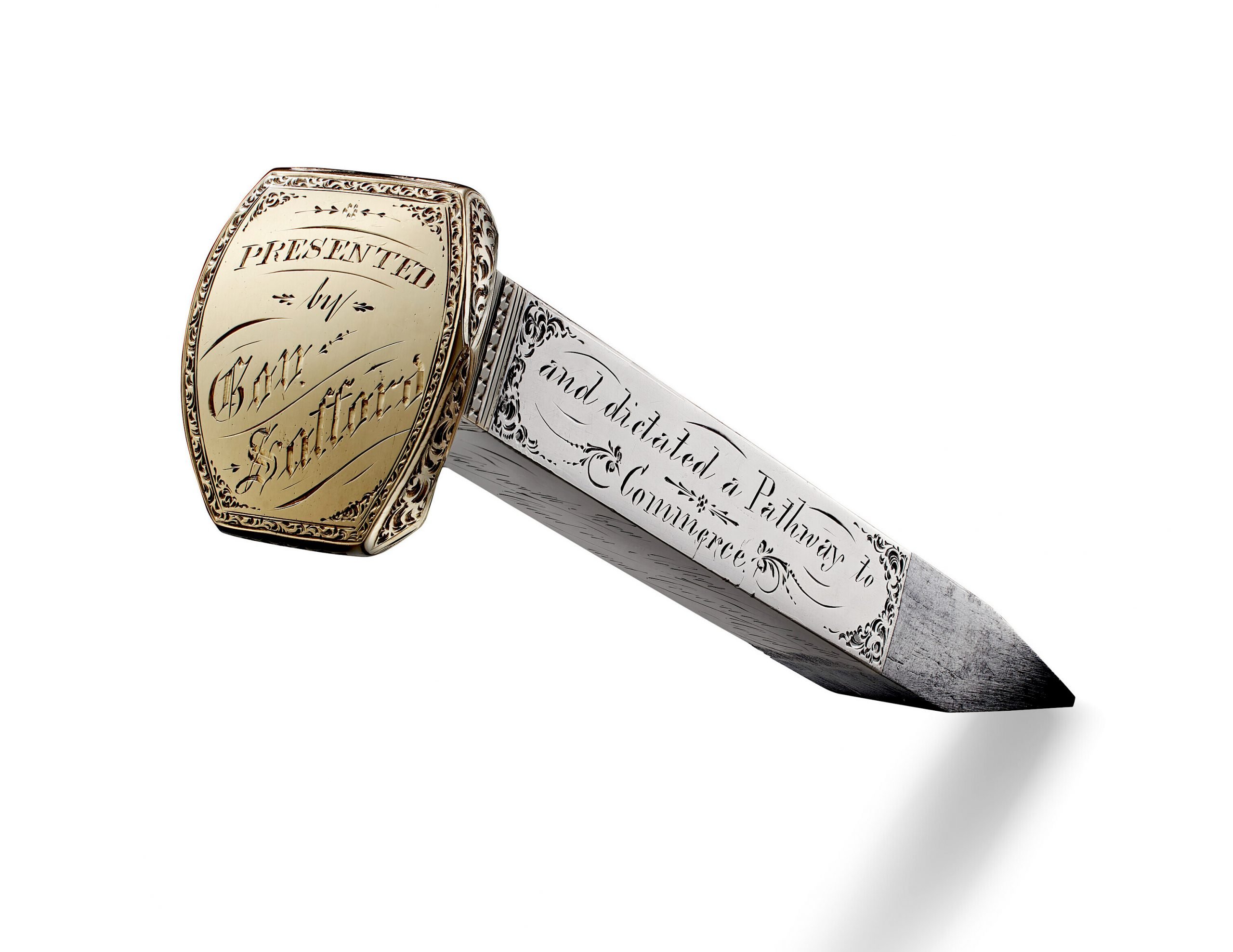
A steel railroad spike clad in gold and silver, used in the ceremonial completion of the transcontinental railroad, sold for $2.22 million at auction today, smashing its pre-sale estimate of $300,000–500,000.
At just over five inches long, the Arizona Spike was the headliner of Christie’s ”The Exceptional Sale,” featuring singular works of historic importance, as well as iconic objects of popular culture. Belonging to the Museum of the City of New York, the piece was sold to benefit the museum’s collection.
“This was a one-of-a-kind piece of historic importance and we knew it would be the subject of intense competition among collectors,” Peter Klarnet, Christie’s Vice President, Senior Specialist Americana, told Artnet News. “In the end, the value soared past our expectations.”
Event marking the completion of the transcontinental railroad, Promontory Point, Utah (May 10, 1869). Courtesy of Christie’s.
The spike was crafted to commemorate the completion of the world’s first transcontinental railroad in 1869, joining the eastern and western halves of the United States and connecting California with the industrial centers of the east.
Spearheaded by an act of Congress before the Civil War and taking six years to complete, the railroad’s construction is considered one of nation’s greatest technological feats of the 19th century, allowing commerce to thrive throughout the country, even in places far from sea routes.
“I think the spike captured the imagination of collectors, in part, because it is a potent symbol of national unity,“ Klarnet added. “That sense of unity means as much today as it did when the transcontinental railroad was finished less than four years after the Civil War.”
Film still from Andy Warhol’s Lonesome Cowboys (1968). Courtesy of the Andy Warhol Foundation.
Another star lot of the sale, one with pop-culture provenance, was a set of reels from Andy Warhol’s film Lonesome Cowboys. Its 1969 screening in Atlanta, Christie’s noted, precipitated the raid known as the Stonewall of the South. About 15 minutes into the spoof of Hollywood Westerns—featuring Warhol, Viva, Joe Dallesandro, Eric Emerson, Taylor Meade, and Tom Hompertz—the screening was cut short by Atlanta police officers purportedly enforcing local obscenity laws.
Housed in two metal flight cases, the original 35mm reels went for $25,000, landing squarely within its $25,000–$35,000 estimate. The entire film was made on a budget of $3,000 in 1968.
Andy Warhol, Lonesome Cowboys (1968). Courtesy of Christie’s.